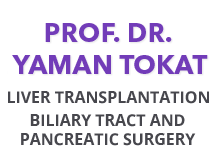Frequently Asked Questions About Liver Transplantation
For the human body to function perfectly, many organs must work together in harmony. The heart pumps blood, the lungs transfer oxygen (O₂) into the blood and remove carbon dioxide (CO₂), the kidneys filter toxins and waste from the body, and the liver performs numerous biochemical reactions like a central laboratory—these are just a few examples of vital functions.
All of these organs, along with many others, work in coordination to sustain life—in other words, to keep the brain alive. Although the brain acts as a central control system, most organs perform the majority of their functions independently. In other words, while they operate collectively on behalf of the human body, each also maintains its own individual activity.
When any of these organs malfunction, diseases occur. If the dysfunction becomes irreversible or untreatable, it begins to pose a threat to life. As the loss of function progresses, life itself gradually comes to an end.
At this stage, a person can only survive with a new organ. If the affected organ is the kidney, the patient may spend the rest of their life dependent on dialysis machines. However, if the failing organ is the heart or liver, the person’s life is in serious danger. If a suitable organ is not found in time, unfortunately, all such patients eventually die.
Organ transplantation is currently the only treatment method that allows these patients to survive. Although research in areas such as genetic therapy and stem cell transplantation continues rapidly, it remains uncertain to what extent these developments will influence treatment programs in the near future.





